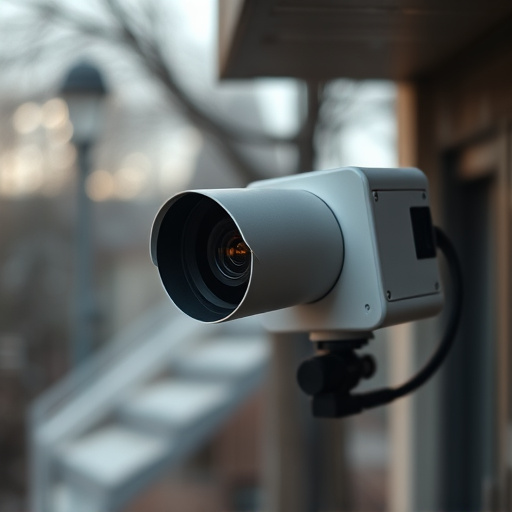When placing nanny cams, balance legal and ethical considerations by understanding local privacy laws, being transparent with all individuals, and respecting privacy rights. Strategically hide cameras in plain sight but unobtrusive areas like corners or everyday objects, avoiding sensitive spaces like bathrooms or bedrooms. Use techniques such as blending devices into household items, optimizing lighting, and reviewing footage to capture key areas without capturing sensitive information from adjacent spaces. In homes, place cameras near windows, doors, or kitchens; in offices, leverage existing infrastructure for covert recording.
In today’s digital era, covert recording spot identification is a complex yet crucial skill. Whether for safety or surveillance purposes, understanding legal considerations and ethical boundaries is paramount before deploying any method. This guide delves into choosing the right location, employing unobtrusive placement techniques for nanny cams, and exploring advanced technology for covert recordings. Discover expert tips on where to hide nanny cams, ensuring discretion while maintaining peace of mind.
- Understanding Legal Considerations and Ethical Boundaries
- Choosing the Right Location: Factors to Consider
- Unobtrusive Placement Techniques for Nanny Cams
- Advanced Methods and Technology for Covert Recording
Understanding Legal Considerations and Ethical Boundaries
When considering where to hide nanny cams, it’s crucial to understand the legal landscape surrounding covert recording. In many jurisdictions, there are strict regulations about audio and video surveillance, particularly in private residences or places where individuals expect privacy, like bathrooms or bedrooms. Before setting up any hidden cameras, consult local laws and privacy acts to ensure compliance. For instance, some regions require explicit consent from all parties involved for any form of recording, while others have specific guidelines for the placement of surveillance equipment.
Ethical considerations also play a significant role in this discussion. While nanny cams can offer peace of mind for parents or caregivers, they must be used responsibly and with transparency. This means informing all individuals present in the home about the presence of cameras and the purpose of their use. Respecting privacy rights and maintaining open communication fosters trust and ensures that everyone involved is comfortable with the arrangement. Remember, ethical boundaries should guide your decisions when considering where to hide nanny cams to ensure a harmonious and legally sound setup.
Choosing the Right Location: Factors to Consider
When deciding where to hide nanny cams, it’s crucial to balance discretion and effectiveness. Consider areas within plain sight that remain unobtrusive yet offer clear lines of vision. For instance, placing cameras in corners or behind everyday objects like pictures frames, plant pots, or bookcases can be effective without drawing attention. Avoid highly visible spots or locations where individuals might reasonably expect privacy, such as bathrooms or bedrooms, to maintain ethical and legal integrity.
Other factors to bear in mind include lighting conditions, camera angle, and the camera’s field of view. Ensure adequate natural light for clear footage and adjust camera angles to capture key areas without capturing identifiable faces or sensitive information from adjacent spaces. Regularly review footage to confirm the camera’s position remains effective and undetected.
Unobtrusive Placement Techniques for Nanny Cams
When considering where to hide nanny cams, the key is to adopt unobtrusive placement techniques that won’t alert the individuals being monitored. These devices are most effective when they operate as seamlessly as possible, allowing for natural observation without causing suspicion or disruption. One popular strategy involves integrating camera technology into everyday household items, such as clock radios, smoke detectors, or even artificial plants with built-in cameras. These covert spots offer a range of advantages: they blend in with the environment, reducing the likelihood of detection, and they provide unobstructed views of key areas within a home.
Additionally, strategic placement near common areas like living rooms, kitchens, or playrooms is crucial for capturing unguarded moments. Positioning the camera within line-of-sight but out of direct view ensures continuous monitoring without interrupting daily routines. It’s also important to consider the lighting; natural light can enhance video quality and reduce the need for artificial illumination. By combining these techniques with a thorough understanding of privacy laws, users can ensure ethical use while gaining valuable peace of mind.
Advanced Methods and Technology for Covert Recording
In the realm of covert recording, technology has advanced significantly, offering more sophisticated tools for capturing evidence discreetly. One of the most commonly sought-after methods involves the strategic placement of nanny cams, or hidden cameras, in various locations to monitor activities. These devices can be miniaturized and integrated into everyday objects like clocks, smoke detectors, or even decorative items, making them nearly invisible to the naked eye.
The process of identifying ideal where to hide nanny cams requires a keen understanding of the environment and the goal of surveillance. For instance, in home settings, strategically placing cameras near windows, doors, or common areas like kitchens or living rooms can provide comprehensive coverage while remaining hidden from view. In office spaces, leveraging existing infrastructure such as light fixtures, ventilation ducts, or even plants can offer effective covert recording solutions without raising suspicion.
In conclusion, while understanding legal considerations and ethical boundaries is paramount, knowing where to hide nanny cams through thoughtful location selection, unobtrusive placement techniques, and advanced technology can provide valuable insights for ensuring safety and peace of mind. By following the guidance outlined in this article, you can navigate these complex issues effectively and make informed decisions regarding covert recording methods.
